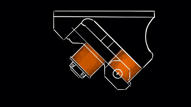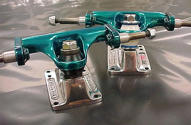Introduction

I was rightly criticized for not having explained why I find this truck a useless experiment in engineering, an “inanity” as I put it in the Why we’re stuck here article. Indeed, I simply assumed that the reader would accept my claim, whereas the other examples I gave are more substantiated. While I do explain in that piece why I think this truck came to existence, I hadn’t really addressed in length specifically what is wrong about it, what makes it an exercise in “inanity.” With this short post I seek to redress that omission.
However, as I start writing this, I realize there’s really not much to say. In the following paragraphs, I will present (and link to) a couple of things about trucks which I have expanded upon in other articles, but I will let the reader compare the facts with the claims made about the RTX Offset by fans, sellers and the manufacturer and decide for themself. My problem with disproving such claims is that it is a tedious task to collect them and hard to then coherently articulate them. Moreover, it is generally not possible to prove the absence of a phenomenon, not least because it’s not “phenomenon” if it doesn’t exist.
It is not possible to prove the absence of a phenomenon, not least because it’s not “phenomenon” if it doesn’t exist.
What’s special about it
For the reader who’s not familiar with what makes this truck special (as in “different,” not as in “valuable”): the manufacturer has made a huge effort to place the axle axis of the truck so that it intersects with the kingpin axis. As you see in the diagram on the right, this is not easy. Most trucks have a one-piece axle which simply avoids the kingpin. Why did Tracker, its manufacturer, do that? I don’t need to discuss this here. I simply want to substantiate my earlier claim that this design has no practical effect.
Theoretical background
The first point that is relevant here is that every truck with a single pivot axis turns the same amount for any given tilt when mounted with a certain turning axis. This fact is basic logic which I invite the reader to understand on their own. I’ve written about this in more detail along with pictures, which might help the reader, here, here and here.
The second point is about the kingpin (KP) angle relative to the pivot axis (PA) angle. This angle determines how much the bushings are compressed when the truck is turning. This post is just about this topic.
Thirdly, it would help if we have a clear model in our mind of how and where the various mechanical forces are applied. I’ve started exploring this topic with this article and I’m going to expand soon. I believe it is correct, but I invite the reader to comment on it. (Based on comments received later, even if to you, dear reader, it may sound obvious or irrelevant, I must stress that the ground reacts to the forces it receives and the forces it receives in this case is the rider’s weight plus/minus muscle forces while pumping, plus wheel/ground friction in reaction to the centrifugal when turning. The force the ground reacts with is therefore irrelevant to truck characteristics; the ground is entirely set-up agnostic!)
One final point that needs being made is about the forces that are applied on a truck, given that it can be considered – for our purposes here – as a system comprised of two rigid solid objects (base plate and hanger) rotating in relation to each other with one degree of freedom. On such a system, any force vector is transferred from the point of application to where it has an effect. So, the force that tends to decompress a bushing which is compressed a certain amount is the same, regardless of where the axle is in relation to that bushing.
What matters
What does matter is firstly where the axle is, in relation to the axis of the rotation between the hanger and base plate (i.e., the PA); the axle-PA distance is the axle offset (aka “rake”). The axle offset can be whatever the manufacturer wishes (and there is indeed in the market a big range of rake options), without the axle having to intersect the KP (and thus without having to build this remarkable but pointless engineering gimmick that is the RTX Offset‘s hanger). As mentioned, rake matters neither for truck turn, nor for bushing compression, but it does affect board behavior (see again this section of the aforementioned article for more on this).
Secondly, it does matter what the KP/PA angle is because it determines bushing compression, but again, the position of the axle is irrelevant to that. The bushings are compressed the same amount, regardless whether the axle axis is intersecting them or not.
Moving the bushings parallel to the axis of rotation doesn’t change their perpendicular distance from that axis; torque remains constant.
What doesn’t matter

It does not matter, however, where the axle is in relation to the KP. It just makes no difference. Moving the bushings parallel to the axis of rotation doesn’t change their perpendicular distance from that axis; torque remains constant. Take a look at the picture on the right. I do not consider this a proper use of the word, but see that what is called “offset” has no effect on truck behavior or mechanical characteristics. I invite the reader to explain why Tracker went to great lengths to set “offset” at exactly 0.
I hope it is now clear that it is unnecessary to build a truck with an axle (axis) that intersects the KP. Both geometrically and mechanically, it has no effect whatsoever.
The Valkyrie trucks came to my attention after writing this post. What I wrote above applies to these as well; the difference is that Valkyrie didn’t do acrobatics with the axle and the KP, but tinkered with the bushing location instead. The boardside bushing is there to support the hanger, not for any other imaginary reason, which is actually a good idea.
Also, I found out that Independent used to have an “offset” truck of their own. Apparently, “offset” used to be a buzzword in forums of older periods. And the hype is still strong. I wonder how many people before me have tried in vain to explain that it is pointless.



So inline axles on a rear trucks of don’trip, bear smokies, rogue slalom is a gimmick? Those trucks are really good, lively and stable, maybe something axle with no offset to a kingpin does?
Maybe. Maybe not.
Maybe they’re good, or maybe they’re not,
or even if they are,
it’s not because of that.
What do you think? 🙂 I wrote what I thought.
Thanks for reading and for your insight!
I would argue that the position of the axle somewhat matters. Let’s set an extreme example where the axle is about 100mm offset, parallel to the ground, front or back. This creates torque and will affect bushing and/or pivot cup compression, which IMO will affect a wide range of things: the truck’s reaction due to front impact, ground impact, bushing compression, and obviously the wheelbase. Even a vertical offset will affect ride height, clearance, etc… Maybe the „rakes“ were too small for these differences to be properly accounted for or even noticed, but I’d argue there are further testing and experiments to be held.
Hey Dino! I lost you at „100mm parallel to the ground.“ Where exactly in this image (https://changeyourangles.files.wordpress.com/2021/01/bad-example.3.jpeg) should we imagine this 100mm? Could you please mark it and post it back here?
For the other things you mention (wheelbase, height, clearance), well, obviously my friend, but that’s not the purported purpose of the gimmick, is it? There’s easier ways to do that stuff. The whole point of the article is that this gimmick is pointless.
Send me back your edited image, I might have misunderstood 🙂.